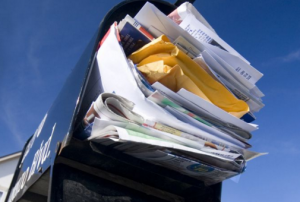
Although this is geared for our email clients, these tips and information apply to anyone that uses email programs.
We offer email services as a valued added service to our clients who choose to use our Website Care Plan services (Hosting, Maintenance, Security & Support). Our new email services include an abundance of storage to start with, but without routine email maintenance or proper setup of 3rd party clients (Outlook, windows live, apple mail, etc..) it may reach the disk quota rather quickly as all emails and email attachments are stored on the mail server. In addition, the mail accounts’ performance will degrade over time without general cleanup of the mail accounts.
Here are some tips to help you keep your mailbox under quota and performing optimally.
If you are using IMAP to check your email
With IMAP mail accounts, all your email is stored on the server, so running into your quota is more common. Most IMAP email client software has a way to check your disk usage directly in the program. (for example, in Outlook, right-click in the Inbox, select Data File Properties, and then the Folder Size… button).
We recommend moving older emails off the IMAP server and into mail folders on your own hard disk (often called “local folders”).
And remember that the Trash and Sent folders are just another IMAP mail folder that takes up storage space.
- When you delete a message, the message is just moved into the Trash folder. We recommend setting your email desktop software to empty the trash when you exit the email application.
- When you send a message, copies of that sent message are retained in the sent folder, even if you delete the original one in the Inbox folder.
If you are using POP to check your email
Filling up your disk quota for POP accounts invariably results from your email client software not removing messages from the server after you have downloaded them to your computer.
Typically, once an email message shows up in your inbox, there is no need to leave a copy on our mail server. In fact, leaving messages on the server will result in slower performance when downloading new emails.
Sometimes people wish to leave a copy of the message on the server for a few days after downloading, so they see their recent emails when using webmail or another device to check email. This is fine, but make sure to set your client software to remove messages from the server after 10-14 days or so.
Click here for instructions for setting up various email clients as well as configuring POP clients to remove mail from the server after downloading.
And the biggest tip to note is that an email is a tool used for communicating and is not a replacement for a file or storage server. Files and important documents (typically attached to emails) should be stored else ware; either on local computers (with backups) or in a file storage system in the cloud specifically designed for document storage.
Hopefully, these tips will help you keep your email system in tip top shape and prevent going over your email or disk quota for any hosting plan you are on.
(Content Updated 6/2021)